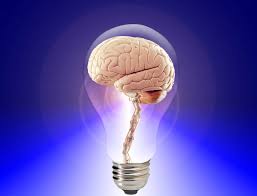No Pain, No Brain… Using Your Brain to Relieve the Cause of Pain
While studying people who are experiencing phantom limb pain (pain in a limb they no longer have), neurophysiologists revealed that pain does not come from the parts of your body that you think are hurting. Pain comes from the brain! In actual fact, all pain is actually a creation of the brain…
Now this does not mean that pain is “all in your imagination”. It means that pain is a very real creation of your brain.
Since your brain creates pain, it can also relieve pain.
When trying to eliminate pain your tendency is to focus your pain relief on where you feel the pain is. This research shows that those efforts have been misdirected. To focus on the true source of your pain you need to look to your brain.
If you want to treat the cause of the pain the Lanthois Pain Relief Method recommends that you need to look to address what influences the way the brain creates the perception of pain.
So what causes your brain to perceive pain in the first place?

Listen to your pain rather than numb it
Your brain’s pain perception is influenced by the feedback it receives from all parts of your body. Your brain continually and accurately monitors how effectively your body is working. With this continual input from all parts of your body and mind, anything that changes the level of danger changes the way your brain perceives pain.
The stronger you are and the better your body is working, the better equipped it is to fight off or run away from danger so in these circumstances the sensitivity of your pain/alarm system can be set fairly low. However, if you are physically weak, lacking fitness, lacking the proper nutrition, lacking rest, or feeling stressed or upset your body needs more protection. As a result your pain system is on heightened state of alert to protect you. Even past memories of being hurt from similar circumstances can trigger this heightened state of alarm! That means smaller irritations can provoke bigger pain responses from your more sensitive pain system.
Loss of the proper alignment or flexibility of parts of your body can interfere with your proprioception (your brain’s ability to know the exact position of where different parts of your body are). This loss of accuracy of knowing your correct body position can increase your chances of injuring some of those body parts. Also brain function has also been shown to be affected by nutrition, rest, omega 3 fatty acids, exercise and even by the balance of bacteria in your gut!
It is the state of your physical and emotional health and lifestyle that most greatly influences how your brain perceives pain. The healthier you are, the less your body perceives pain. So while many people think that they need to get out of pain in order to be healthier, the opposite is true. You need to be healthier to reduce your pain.
That means your pain is not a bad thing to suppress but should be considered as a natural warning sign for your overall health and an indication to improve your health habits and not just an alert to some damage to a part of your body. It also highlights why treatment for pain relief that is not directed at boosting your overall well-being is bound to be ineffective in the long run. If you think about it, pain is “all in your head” but it comes from part of your head that is responsible for healing and wisdom. We need to use that a bit more.
